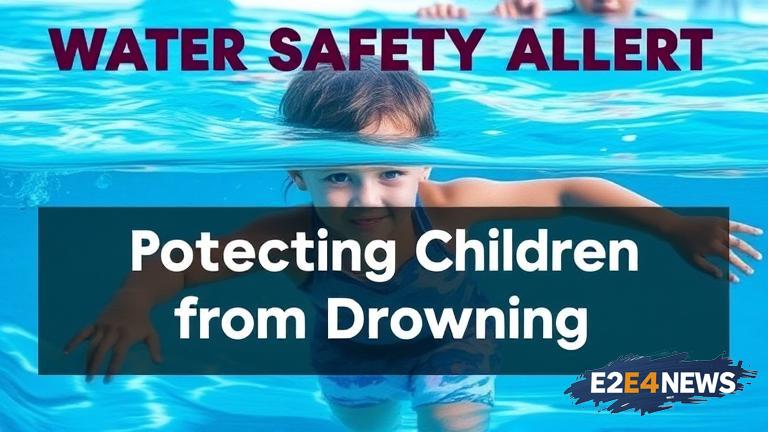According to recent reports, drowning remains a leading cause of death among children, with many cases occurring in residential pools and bathtubs. The American Academy of Pediatrics (AAP) emphasizes the importance of constant adult supervision when children are in or around water. Additionally, installing fences and gates around pools can help prevent accidental entry. It’s also crucial to teach children basic water safety skills, such as entering and exiting the pool safely and not pushing or jumping on others in the water. Furthermore, parents and caregivers should learn CPR and first aid techniques to respond effectively in case of an emergency. The Centers for Disease Control and Prevention (CDC) recommends that children take swimming lessons to reduce their risk of drowning. However, it’s essential to note that swimming lessons are not a substitute for adult supervision. In fact, the CDC reports that even experienced swimmers can drown, highlighting the need for continued vigilance. To minimize the risk of drowning, parents should also ensure that their children wear properly fitting life jackets when engaging in water activities. Moreover, it’s vital to be aware of the potential hazards associated with inflatable pools and water parks. The Consumer Product Safety Commission (CPSC) advises consumers to follow the manufacturer’s instructions for inflatable pools and to ensure that they are properly secured. In the event of a drowning emergency, it’s crucial to call 911 immediately and begin CPR if the child is unresponsive. The AAP also recommends that parents and caregivers stay within arm’s reach of their children when they are in or around water. By taking these precautions and being mindful of the risks, parents and caregivers can help prevent child drowning accidents and ensure a safe and enjoyable summer for their children. Moreover, communities can also play a role in promoting water safety by providing access to swimming lessons and water safety education. Ultimately, it’s a collective effort to prevent child drowning accidents and create a safer environment for children to enjoy the water. The importance of water safety cannot be overstated, and it’s crucial that we take proactive steps to protect our children from the risks associated with drowning.
